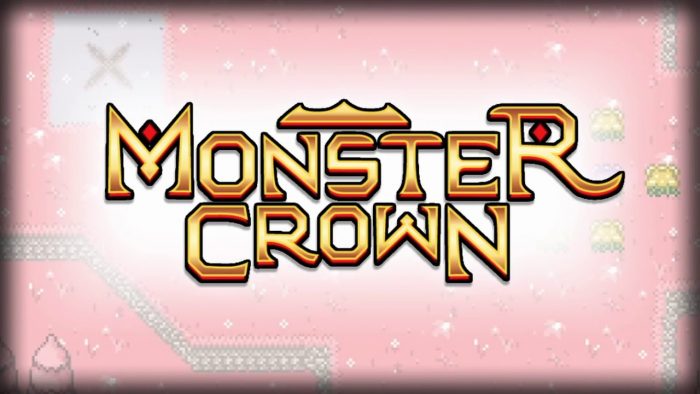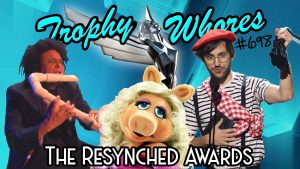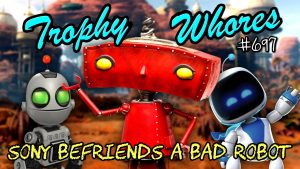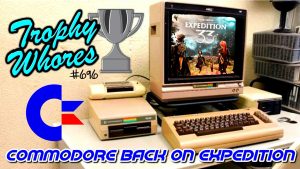Monster Crown is a special indie game where you train and breed monsters and go on a deep and dark adventure. While the game may look similar to Pokemon, and there may be monsters to collect, that is about where the similarities end. Once we had these two on Nintendo Duel Screens, I was sold. I had to back this game on Kickstarter. Since then they have smashed goal after goal and have a few days left to keep pushing.
A couple of weeks ago I sat down with Shad Shwark to talk about the artistic process behind his monster designs. This week I got to sit down with GameOnion & Alex Naveira, two composers working on this ambitious title.
Proven Gamer: First I want to thank you for agreeing to sit down for this interview. Monster Crown is shaping up to be something really special. So much so that I just HAD to become a backer! Before we get into the nitty gritty of music composition for this game, tell the Proven Gamer audience who you are , what are your roles, and how you two became involved in the project?
GameOnion: I’m a member of the music-team as a composer / arranger alongside Alex. It wasn’t always this way though, I actually used to do art for this project, but then I discovered music for myself. It’s just way more fun for me personally. Besides that, I’m also working on sound effects.
Alex Naveira: I’m also a composer and arranger for Crowns alongside Onion. I believe I started sometime in 2016, after onion had told me that there was a game he was doing art for that needed some music. The concept was pretty cool so I tagged along for it.
PG: So you guys had a previous relationship? How did you guys meet up?
Alex: I had heard of Onion in 2015 through twitter (I saw that he was a really good artist), but met him in 2016 through the comments of my YouTube remixes since he enjoyed a few of them. Him and I had worked together on WwwWario’s “Super Wario Land” in May of 2016 (although he was more focused on art at the time). We were pretty close back then and afterwards, he introduced me to the Monster Crown team. For the past year he’s gotten more into music production and I can safely say he’s one of my closest friends in the scene.
PG: Awesome. Now that all that getting to know you part is over with and I am all misty eyed, lets talk music shall we? Music in video games has started to become one of the most talked about aspects in gaming over the last few years. People are noticing a good soundtrack more and more. Some playlists of gaming soundtracks have tens of thousands of plays on YouTube. It wasn’t always that way, though. What do you think has changed?
Onion: Not sure, to be quite honest. I’d imagine it’s related to the increasing quality of music in the recent years. The appeal is much bigger these days.
Alex: I think that with the advent of the internet came the ability to find tons of other people that share your interests, and, I think a culture naturally appeared that celebrates video music – probably because lots of people play them, and because I don’t think you can have memories of your favorite childhood game without some sort of earworm-tune that stayed with you. Most people don’t think of Mario without the classic Level 1-1 theme, if you get what I mean. Nowadays people want to capture that “making of a classic” so a lot of it is based on nostalgia – probably why a lot of projects gain traction, since they want new things with the old coat of paint.
PG: What would you say is the most important aspect of music in games?
Onion: Themes in games are usually bound to specific characters, situations or areas. Usually, my goal is it to capture the atmosphere / personality of a theme or character. That can be done in various ways, instrument selection is an important factor, in my opinion.
Alex: Like onion said, atmosphere is incredibly important in regards to how I want a track to sound, but also, a good soundtrack (in my opinion) needs to trigger certain emotions as well. Certain songs (such as the “Fusion Facility” location track) were made with regards to the location that they play in, but to also have a melancholy vibe or nostalgic tone, as if you’ve heard it before – those kinds of tracks are my favorites in video games.
PG: So generally speaking, it seems like you are presented with a location or character and compose based on what is presented. With that being said – have you even come up with a track that dictated a location or character?
Onion: Not that I remember, no. If we did that, I wouldn’t be sure if it would fit.
Alex: Nah, so far it’s been the other way around every time. That would be an interesting way to approach creating a setting, though.
PG: So does coming up with a sound in your head happen right away or is it something you workshop a bunch?
Onion: For me personally, it’s kinda both. Sometimes I just make up stuff as I go along. Once you start working on something, a lot of ideas randomly come up.
Alex: Since the tracks are all chip-tune styled, I mostly think about how I can make a sort of hybrid of modern synth sounds and old GB-style sounds. Usually there’s more synth added on if I feel that the arrangement needs a bit more oomph. Ideas for mixing synth with chiptune usually come pretty fast, though.
PG: Chiptunes. I’m glad you brought that up. I’ve heard musicians say that working with chiptunes is very limiting, which breeds creativity. Have you found that to be the case?
Alex: I enjoy working with chiptune channels, as I feel like each individual channel (be it the square, saw, triangle, etc.) is sort of it’s own little song. Since there are only 4 base chiptune tracks I work with to start, I enjoy trying to push as much as I can into such a small amount of default channels.
Onion: I personally find it somewhat limiting, but you need to keep in mind that some of gaming’s greatest tunes were made with those limitations. If they managed to make it work, we can too. Something else to remember is that Monster Crown combines chip-tune and synth / orchestra. That definitely gives us a lot more freedom with instrumentation.
PG: This is a perfect transition into walking us through the process step-by-step. So we are going to debut a brand new track right here on Proven Gamer. Can you guys take us on a journey on how this track was made from conception to completion?
Onion: While I can’t say much about Alex’s workflow on that specific theme, here’s my usual process: I come up with either the melody or a bassline first. That original melody I come up with changes a lot through the creation of a song, usually because it doesn’t fit within a progression I would love to use or something like that. If you’re set on a melody, the next logical step would be to come up with a backing track / chord progression.
Onion (Cont’): As you can tell by Alex’s track right there, he used a piano for chords, which isn’t really a wave table-type sound you would expect in a game like this. That’s usually what I try to do too: Chords are played by more realistic instruments or a synth, it’s a nice contrast. Once I’m set on a progression, the next step would be to come up with something like a countermelody, of course. Striking the right balance between orchestral sounds, synths and wave table-synths is important here. Percussion is usually the last thing I do, but it varies. So that’s the general composition-process, but mixing and mastering is a whole different story. That is a big, complicated mess, which I can’t possibly cover in detail now. It usually takes longer than the composition itself for me.
Alex: For Mill Town, the first half was actually an older composition I did about a year before I arranged it again for Monster Crown. The second bit before the loop that counts as a ‘bridge” back to the beginning would be the second song. Sometimes I have little mini-songs that I match up with other ones I have in my head. I tend to start with a melody – since I prefer it to dictate what the chords are, not the other way around. I started with just the chiptune version and that was considered the final version for a while, but when I decided to try and define just what the “style” for Monster Crown was, I went back and added some of those synth elements – as I did to a lot of the tracks. I think onion’s workflow and my own are very similar when it comes to a composition. I’ve learned that mixing in mono actually helps a lot, so that’s one thing I’ve started doing that I could point out, but a lot of times it’s a whole mess of EQ bands and filters.
PG: Love the complexity in the layers there. Really catchy, but not too repetitive. Feels like I am in a laid back part of town with a sense of adventure. So we have established that music can set the tone for specific scenes. How can music in games tell a story? Do you have any favorite tracks from gaming past that tells a story?
Alex: Music can tell a story through emotions alone – this one really overlooked track from an already overlooked game, Island Life from The Legend of Zelda: Phantom Hourglass, always gave me a feeling of “this is what life is now for the protagonist”, and sets a tone for the rest of the soundtrack too since it plays early on. It’s also an arrangement of the Fairy Fountain / File Select song that has been in the series since nearly the beginning.
https://www.youtube.com/watch?v=hRsjVhNWWFc
Alex (Cont):When it comes to Pokémon, I love how bittersweet and melancholy New Bark Town from Gold and Silver sounds, because it represents the vibe that your character has been there for his or her entire life.
Onion: That’s a very difficult question for me to answer, considering how many games I’ve played and OSTs I’ve listened to, haha. Though, one soundtrack that has always sticked out to me was Pokémon Mystery Dungeon 2’s selection of music. The progression of the tone of the themes is quite interesting, they get pretty haunting for a Pokémon game near the end of the story. I connect a lot of memories with that game, and the music takes me back instantly. This OST manages to capture the atmosphere of each area incredibly well, the emotional themes still make me feel the same way as they did when I first played the game. Simply incredible.
PG: Thank you guys. This was a lot of fun and I learned a lot. Like that I will never be able to do what you two do. Good luck in the final days of the Kickstarter campaign!
Onion: Ha ha. Thank you for the support and thank you for having us!
That is it folks. Monster Crown can be followed on Twitter and you can back them on Kickstarter as well. Don’t forget to subscribe to the Nintendo Duel Screens feed in Apple Podcast, Google Play Music or RSS to listen to the interview with Shad and Jason where they talk everything Monster Crown.





More Stories
Nintendo Announces Nintendo Switch (OLED model) With a Vibrant 7-Inch OLED Screen, Launching Oct. 8
Hyped Again: All thanks to the Nintendo Switch!
Temtem – Massive Multiplayer Creature Collecting Game – Funding Reaches $250,000 – Now Coming to Nintendo Switch